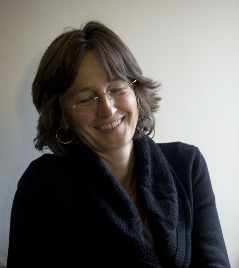On thesis supervision meetings
By Karin Bijsterveld
A few years ago, I changed my way of organising individual thesis supervision meetings with BA and MA students. I know I am not the only one—I heard other teachers talking about similar ‘systems,’ but newcomers might want to hear more about it. Let me first explain how we, the students and I, did it in the past, why and how we changed it, and, finally, how it seems to ‘work’. I will only write about the organisation of the meetings. For a blog on motivating and reassuring students who are writing their thesis, you might read Esther Versluis’ contribution.
In the past, students would send me drafts, I would print these out, read them while scribbling notes in the margins, discuss these during a meeting with the students, answer their questions, hand over the printed copy to them, and make an appointment for another meeting. Over time, I learned from my PhD students that the notes were infamous for being barely readable, and they consulted each other to figure out what I had actually noted down. That’s not exactly best practice, and with BA and MA students I also noticed that most of the meetings, that might easily take an hour, were about discussing how the drafts could be improved rather than hearing from them what they had in mind about the research and writing ahead.
Students now submit their drafts on the Friday afternoon before the Tuesday, Wednesday or Thursday on which we have a meeting. I read their work either during the weekend – not generally recommended – or early in the week, and submit their work with track changes on the day before the meeting, or as soon as possible. Comments in balloons that are marked with yellow are more generic writing or referencing issues that return throughout the drafts. It means the following: I comment upon it now, once, but it is relevant for all your writing. Students can collect those remarks in a separate document that they check before they submit the next draft. I have to concede that it usually takes some time before students actually do this, but well, it is an ideal. Comments in balloons marked in green are issues that I assume require a more in-depth discussion of interpretation or research decisions to be made.
Because students read the comments before the meeting, they have already processed them, and there is ample time to discuss the issues that are unclear or are about how to proceed. It also creates more opportunities for an exchange about issues students raise themselves. In this manner, the meetings simply have become more interesting, forward-looking and enjoyable. My supervision meetings (usually once in two weeks) are now half an hour each, and feel less packed than the full hours I scheduled in the past. We even have more time for chatting, more important during the pandemic than ever. The students themselves cannot compare this situation with previous ways of working, of course. I noticed, however, that they much appreciate receiving the comments on their drafts prior to meeting.
Some students, especially those who have been enrolled in colleges in Anglo-Saxon style, ask for even more meetings, once a week. So far, I have managed to convince them that they need time for actually doing the research and for finding things out for themselves. It is also my way to prevent my supervision turning into a sort of curling-parenting, a danger anyone reading between the lines would already have deduced from what I have said so far. Anyhow, this way of organising supervision sessions is just a suggestion.
Karin Bijsterveld is historian and full professor of Science, Technology and Modern Culture. She has been teaching at FASoS, its predecessors and the Faculty of Health, Medicine and Life Sciences (FHML) since 1988. She usually supervises between 4 and 10 internships, BA and MA theses per year. Many of her courses focus(ed) on research design, methods or creating cultural events such as festivals.
For another blog on thesis supervision at FASoS, see here.





[…] the latest post on the FASoS Teaching & Learning Blog, Karin explains how she and her students did it in the […]